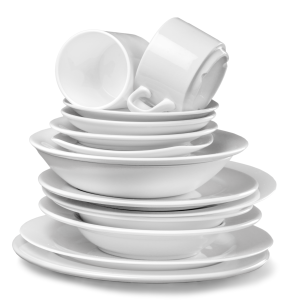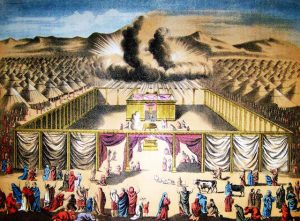The “burial” of silverware and dishes, when switched in the manner you describe, has no source in Jewish law. It was a very common misconception in the last generation, and I’m not quite sure how it came about.
Sadly, it was often the reason that many well-intentioned Jews ceased their kashrut observance after many years of keeping kosher, as they weren’t willing to bury their dishes. Ironically they stopped for no good reason, as there is no source in our tradition for what they thought they needed to do!
The Torah describes how one goes about kashering dishes which are non-kosher. After the Jews won the war against the Midianites and took their vessels among the spoils of war, G-d commanded them in the laws of rendering the Midianite vessels kosher. “This is the decree of the Torah…. Only the gold and the silver, the copper, the iron, the tin, and the lead — everything that comes into the fire (i.e. is used to cook over an open flame, like barbecue grates) — you must pass through the fire and it will be purified…, and everything that would not come in the fire (i.e. one cooks with it using water, such as a pot), you must pass through the water (i.e. immerse it into a pot of boiling water).”
The Torah is teaching that the manner the vessel was used with the non-kosher food is the manner by which it needs to be kashered. It also is saying that only certain types of vessels can be kashered at all. The laws of kashering, or rendering vessels kosher, for the most part are simple, but complications can arise. A very intricate section of Jewish law is dedicated to this process and to which types of vessels can be koshered. It is studied by all rabbis, although some specialize in this field.
Your silverware simply needs to be clean and not used for 24 hours. Then it is dropped into a large pot of well-boiling water, one by one. You then pour out the hot water, and rinse the whole thing with cold water, and — presto — it’s kosher again!
As a rule, I always recommend, when possible, to do the kashering process in the presence of an expert. The rabbis at the DK, or Dallas Kosher, are extremely knowledgeable, helpful, caring, and warm. You can always count on them for help, as are the the staff at Kashruth agencies wherever you may live. They’re there as a resource for you and the entire community. We should all be proud to have such resources in cities throughout the world and make the best use of their services.
Kashrut has been a strong force in protecting and preserving the sanctity of the Jewish home and family for over 3000 years. I wish you much success in continuing to be a vital link in the glorious chain of kosher kitchens spanning across the generations. In this way you bring nachas to your dear mother, the previous generations and serve as a source of inspiration and as an example for the generations to come!
Sincerely,
Rabbi Yerachmiel Fried



